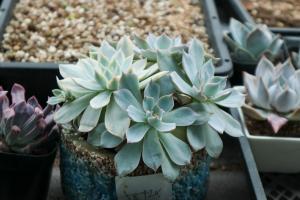How to Care for Newly Planted Arborvitae Trees
Arborvitae trees are a popular choice for homeowners due to their evergreen foliage and ability to provide privacy. If you've recently planted arborvitae trees in your yard, it’s important to take care of them properly to ensure their growth and health. Here are some tips on how to care for your newly planted arborvitae trees:
Watering the Trees
Newly planted arborvitae trees need plenty of water to establish their roots and grow. Make sure to water the trees deeply once or twice a week for the first few months after they are planted. During hot and dry weather, increase watering frequency to prevent the soil from drying out. You can check the soil by sticking your finger a few inches into the dirt. If the soil feels dry, it’s time to water the trees. It's also a good idea to mulch around the base of the tree to help retain moisture.
Providing Adequate Sunlight
Arborvitae trees prefer full sunlight, so it's essential to plant them in an area where they can get at least six hours of direct sunlight each day. Make sure there aren't any large trees or buildings blocking sunlight from reaching the trees. If possible, avoid planting arborvitae trees in areas with heavy shade, as they won't receive the sunlight they need to thrive.
Regular Pruning
Regular pruning can help arborvitae trees grow more dense and full. Prune the trees annually in the late winter or early spring before new growth appears. Use sharp pruning shears to remove any dead or damaged branches, as well as any branches that are growing in a way that disrupts the tree's overall shape. Be careful not to remove too much growth, as this can harm the tree.
Protecting from Pests and Diseases
Arborvitae trees are relatively resilient to pests and diseases, but they can still be vulnerable to certain issues. Keep an eye out for signs of spider mites, bagworms, and other common pests that can damage the trees, and take action to eliminate them as soon as possible. If you notice any brown or yellow spots on the foliage, this could be a sign of disease or insect infestation. Consult with a professional arborist to determine the best course of action.
Fertilizing the Trees
Arborvitae trees don't require fertilizer, but adding it to the soil can help promote healthy growth. If you choose to fertilize the trees, do so at the beginning of the growing season. Choose a balanced, slow-release fertilizer and apply it according to the instructions on the package. Avoid fertilizing the trees during the summer or fall, as this can encourage new growth that may be vulnerable to cold weather and frost.
Conclusion
Caring for newly planted arborvitae trees requires attention and effort, but it's well worth it to ensure the trees grow healthy and strong. Remember to water the trees deeply, provide adequate sunlight, prune regularly, protect from pests and diseases, and consider fertilizing the trees for optimal growth. By taking these steps, you can enjoy the beauty and privacy that arborvitae trees provide for many years to come.

 how many times do yo...
how many times do yo... how many planted tre...
how many planted tre... how many pine trees ...
how many pine trees ... how many pecan trees...
how many pecan trees... how many plants comp...
how many plants comp... how many plants can ...
how many plants can ... how many plants and ...
how many plants and ... how many pepper plan...
how many pepper plan...































